How Do You Know When Corn Is Ready for Harvest

Corn gets a bad rap these days. Information technology's in everything from breakfast cereal to dog food to skin care products, and then how can it be healthy?
Well, my friends, it is.
Especially sugariness corn, which is loaded with cobweb, vitamin C, folate, thiamine, magnesium, and potassium, all of which are essential to human health.
Information technology'southward the processed products you have to watch out for, non garden-grown deliciousness. Corn is, in fact, a whole grain!

We link to vendors to aid y'all find relevant products. If you buy from one of our links, we may earn a commission .
Then, say you planted some nutritious maize.
Yous've sown the seeds and watched them grow from cute light-green seedlings all the manner into massive, four- to vi-pes-tall stalks, depending on the diverseness y'all planted.
The tassels pollinated the silks with ease. Ears take adult into gorgeous cobs.
If it's sweet corn variety you're growing, yous dream of peeling dorsum the husk and taking a huge bite of fresh, utterly delicious kernels.
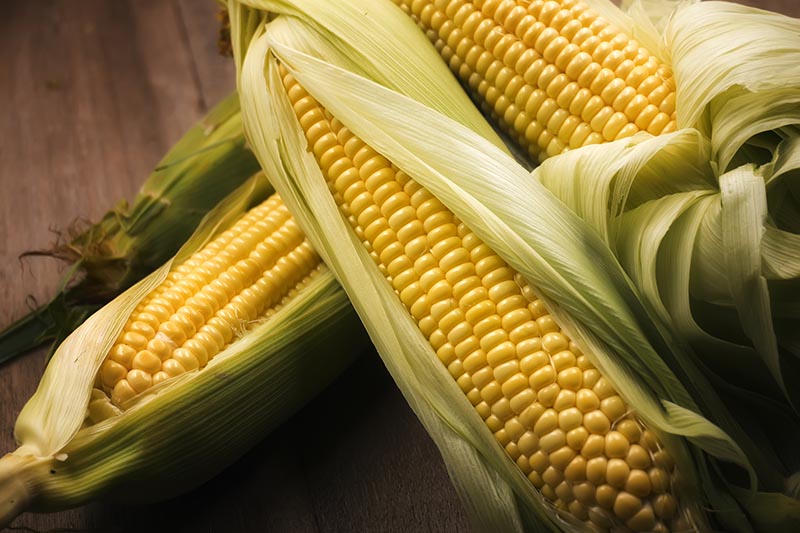
Yes, you tin eat sweet corn – considered a vegetable in most cases – raw. Yep, I literally just learned that.
Or mayhap you're growing paring corn, which is classified equally a grain, to make homegrown tortillas. Or popcorn for your ain delicious poppable cobs.
Whatever multifariousness you chose, y'all're ready to harvest… you think.
But you're not certain. How can you tell when the maize is ready? Are there any signs to look out for? And if it is ready, how practise you lot become the ears off the stalks?
In this guide, I'll answer all these questions.
Ready to harvest? Let's go!
What Yous'll Learn
- The Five Types of Corn
- When to Harvest
- Milk Stage Harvesting
- Dry Harvesting
The Five Types of Corn
Before we get started, you lot should know that there are five main types of maize that gardeners abound:
- Paring (Zea mays var. indentata), as well chosen field corn, is typically used to feed livestock or dried and milled every bit a grain.
- Sweetness (Z. mays var. saccharata or Z. mays var. rugosa), aka the best type ever, is most often sold and enjoyed fresh as a vegetable, or it may be canned or frozen.
- Flint (Z. mays var. indurata), aka Indian corn, comes in a range of colors and is as well used equally beast feed or to make cornmeal.
- Flour (Z. mays var. amylacea), as the name suggests, is typically used for making corn flour.
- Popcorn (Z. maysouth var. everta) is a special type of flint corn bred to popular when kernels are dried and heated, rather than cracking.
The good news is that fifty-fifty with five different types of maize available, there are merely two master ways to harvest it. And the difference is really temporal: it's all nearly when you harvest.
When to Harvest
For simplicity, I've divided the two harvesting times, or methods, into ii sections: milk stage and dry.
Milk Stage Harvesting
If you lot want that sweet, slightly crunchy, divine-for-roasting corn on the cob, you'll want to harvest ears at the milk stage.
Of the five master types, predominantly sweet and occasionally dent varieties are harvested at this phase.
Yous can learn more nigh growing sugariness corn here.
The milk stage is when the kernels are filled with milky-sugariness sap, and it occurs well-nigh 18-twenty days after the female silks appear…
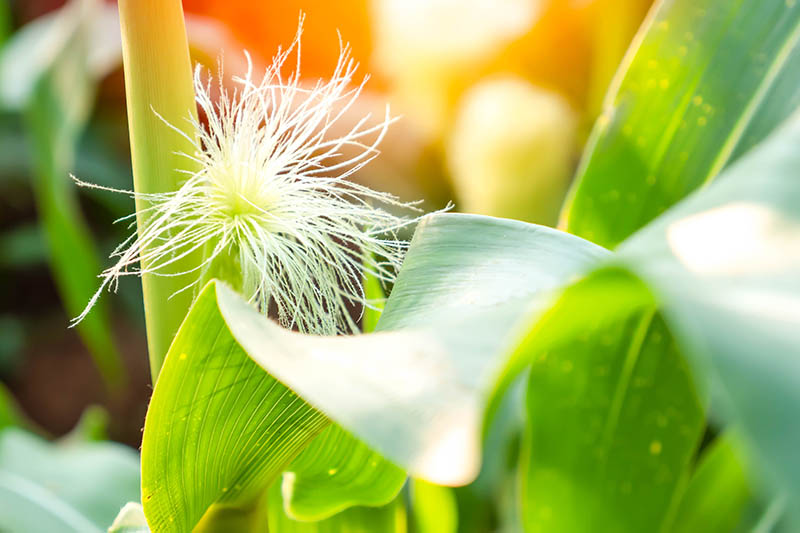
…and are wind-pollinated by the male tassels.
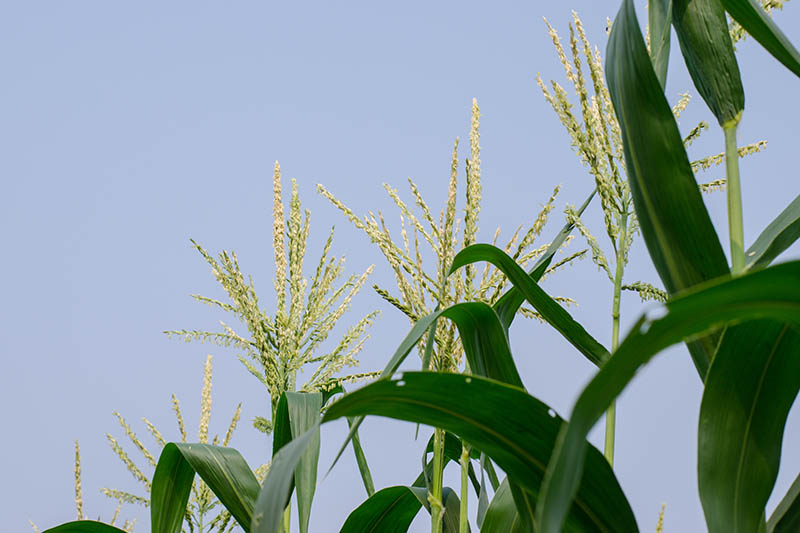
Silking unremarkably happens effectually 50-65 days afterwards sowing seeds, depending on the variety and growing conditions.
To harvest maize in the milk stage, yous'll desire to outset watching it for signs of readiness at around 70-fourscore days after sowing.
Hither's how to tell: ears will be green and feel full and business firm when you wrap your mitt around them, and the silks will have a dried-out dark-brown color.
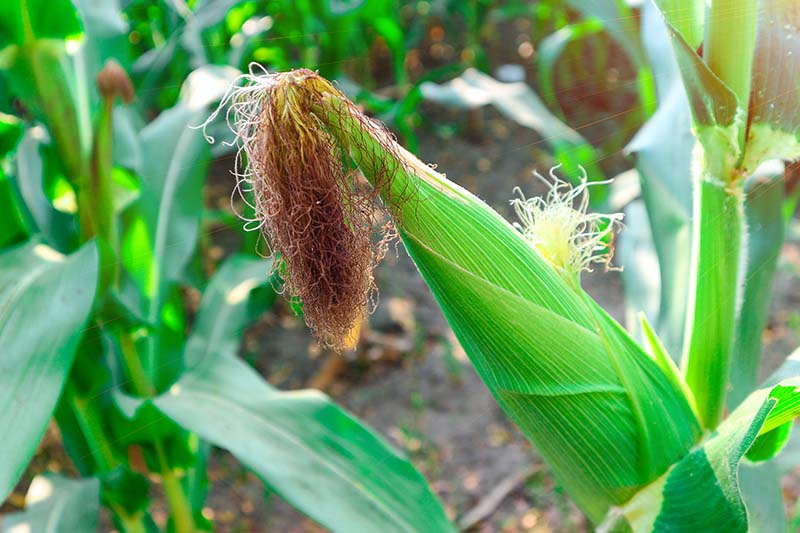
To be completely sure the kernels are ready, gently open the leaves and stick your fingernail inside a kernel. Yous should run into sweet, milky sap – not a clear, watery liquid.
If y'all see the former, you're good to harvest. But if information technology'southward watery, just comprehend the kernels back upwards and give the ear a few more than days to mature.
To harvest the ears, grip them with your mitt and gently twist or bend them downwards until they interruption off from the stalk.

Similar summertime-lovers everywhere, you can and then roast the cobs on the grill and slather them with butter and salt.
Or, you know, just swallow them raw straight from the garden. I admittedly plan to attempt this when my sweet corn reaches the milk phase this year.

Y'all'll desire to consume or preserve sugariness corn inside vi hours after picking for the best flavor.
In the days after yous harvest the maize, the sugars gradually turn to starch, causing them to get less sweet and more than tough.
If y'all do decide to store it for a few days before eating it fresh, exit it in the husk, wrap information technology in damp paper towels to preserve the moisture, and refrigerate for up to four days.
To preserve the sweet kernels for later apply, you can either:
Blanch ears in boiling water for three minutes, allow them absurd, and then cut the kernels off the cob at a depth of 3/4 of the kernel.
So, freeze them in a plastic goose egg-top pocketbook or airtight container, or pressure level tin the kernels.
For creamed corn, echo the above process just cut the kernels abroad at half of their depth so yous don't get the tough base of the kernels.
So scrape the rest of the corn off the cob and mix it in with the cut kernels.
To freeze corn on the cob, boil ears for 7-11 minutes, depending on their size (7 minutes for smaller ears, 9 for medium cobs, and eleven for the biggest ones) and and so cool them in an ice bath.
Cut into four to half dozen-inch pieces and store in the freezer in airtight containers.
Frozen corn will keep in the freezer for near 12 months.
Dry out Harvesting
For popcorn, flint, flour, and dent varieties, most growers wait until the kernels are completely dry before harvesting.
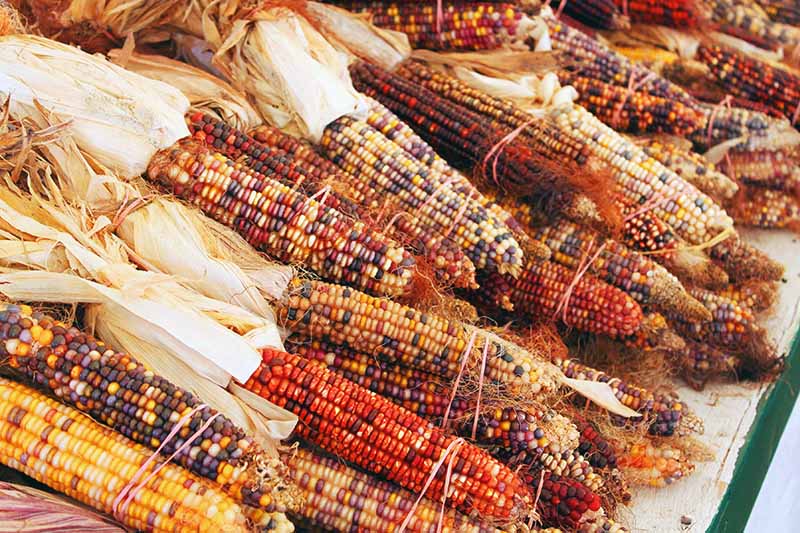
That's because popcorn needs a wet level of 13-14 percent to requite it that perfect pop.
Flint, flour, and paring cobs are either used for decoration, fed to livestock, or ground into cornmeal or flour.

This maturing and drying process ordinarily takes about 110-120 days.
But it'south worth the look! Plus, it's pretty easy.
All y'all have to do is expect for the maize to dry out completely. The husks, silks, and tassels volition all be brown.
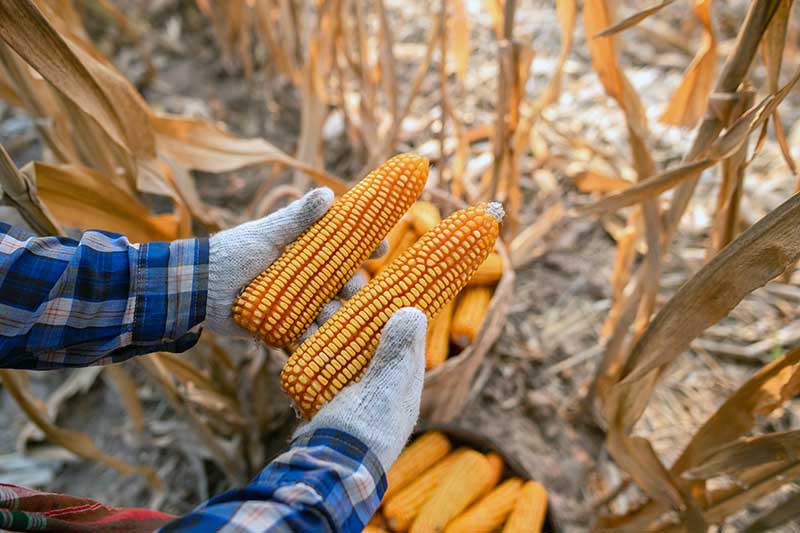
The kernels should feel rock-hard, only too much or besides fiddling moisture can consequence in poor popping.
To test this, scrape off a couple of kernels and try popping them in the microwave or in a pot on the stove. If the popped kernels are too rubbery when y'all bite into them, or they have jagged edges, they're not ready.
If you lot're actually serious well-nigh your popcorn, yous can test the moisture levels with this method:
Grind upward some kernels into a coarse flour, and weigh information technology. So dry it in the oven at 250°F for three hours, and weigh it once more.
And then subtract the dried weight from the original weight and carve up it by the original weight to observe the pct of moisture in the popcorn.
Then you lot'll know whether it needs to exist left to dry for a little longer.
When the popped kernels gustation light and feel crisp on your tongue, pull the cobs off the dying stalks and use a butter knife to scrape the kernels into a bowl.
You can shop the popcorn in an airtight container for up to two years, in a cool, dry out place.
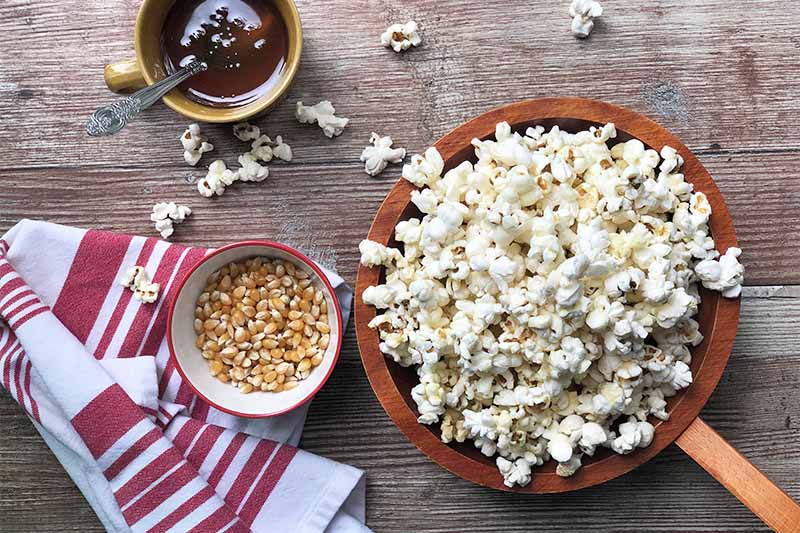
For popping instructions, see this scrumptious recipe for salted honey butter popcorn on our sister site, Foodal.
To grind flour or dent corn into cornmeal, stick information technology in your high-speed blender or nutrient processor and grind to your desired consistency, or become out the grain mill. Don't have one? Option your favorite from this review of the all-time countertop grain mills on Foodal.
(I've washed this several times with stale dent corn in my Blendtec considering I love cornmeal mush, which is like to polenta or grits.)
Go along cornmeal in an airtight container in the freezer for up to two years, in the refrigerator for up to eighteen months, or in the pantry for up to a twelvemonth.
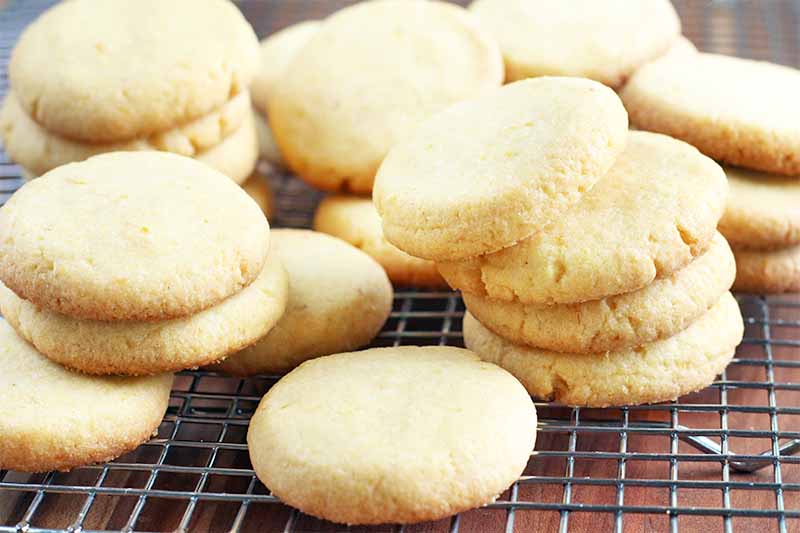
And then broil these delicious lemon cornmeal cookies, also from Foodal, with whole grain maize flour you grew in your ain garden.
Source: https://gardenerspath.com/plants/vegetables/harvest-corn/
Postar um comentário for "How Do You Know When Corn Is Ready for Harvest"